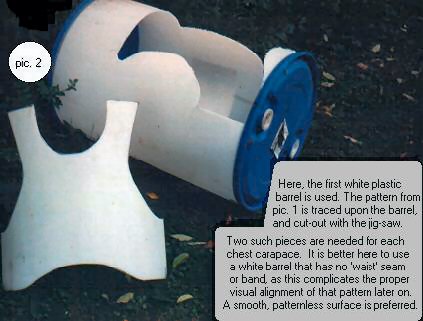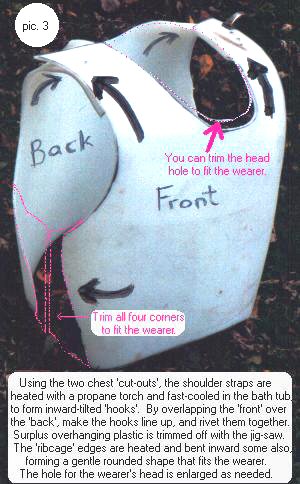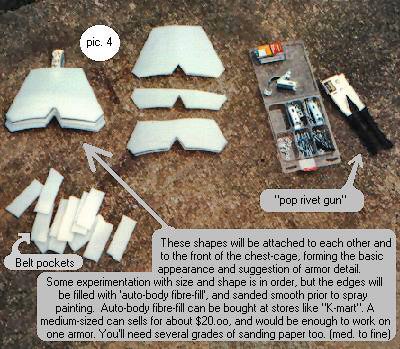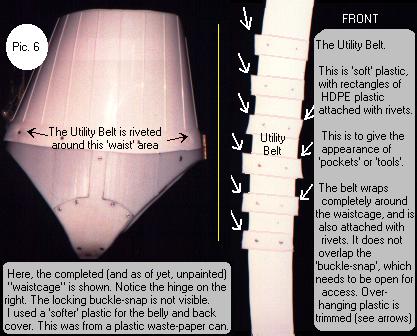
By examining these photos and the ALT-image text (hold pointer tool over photo for pop-over text), the can see some (and not nearly all) of the steps involved.
It is always best to make the parts with white posterboard first, and test-fit the part by holding it against yourself. The rolled wrist gauntlettes for instance were inspired by this procedure. And these are made with the 'softer' plastic like what is used for waste-paper trash cans as they have to roll fairly tightly. Leave enough room to get your hand through the tight end, however. -Experimentation is the key!
The Upper Thigh Covers in the lower half of Pic. 7 are made with the white 55-gallon barrel, HDPE, and thinking ahead, small belt slots are cut into the upper/outer edges or an off-set handle is riveted inside the upper cover, and you can use small black canvas/nylon dog collars to attach these to your belt when getting 'suited up' to wear your armor. These dog collars make the Thigh Covers 'vertically adjustable'. You can raise or lower them accordingly. Use a non-stetching belt or pet collar... you want this to remain relative in position, you do not want this to 'sag' while wearing it.
Not shown in Pic. 7 are the lower leg covers, but using similar techniques, these merely slide up onto the wearer's legs, and rest upon the wearer's shoes. Definately you will need to take your white shoes off before putting these on, then, put your shoes back on. No straps required for these Lower Leg Covers unless you want something to 'tighten' the unit to your leg. A tensioning elastic strap perhaps?. Make no effort to conceal these black dog-collar snaps and belts throughout the construction of this armor as they add to the texture and overall appeal of the entire armor, so leave 'attaching hardware' visible. Let your creativity take over and make it work for you.
Now, proceed to Page Three to begin viewing my next project, a Stargate SG-1 "Serpent Guard Armor".
|











